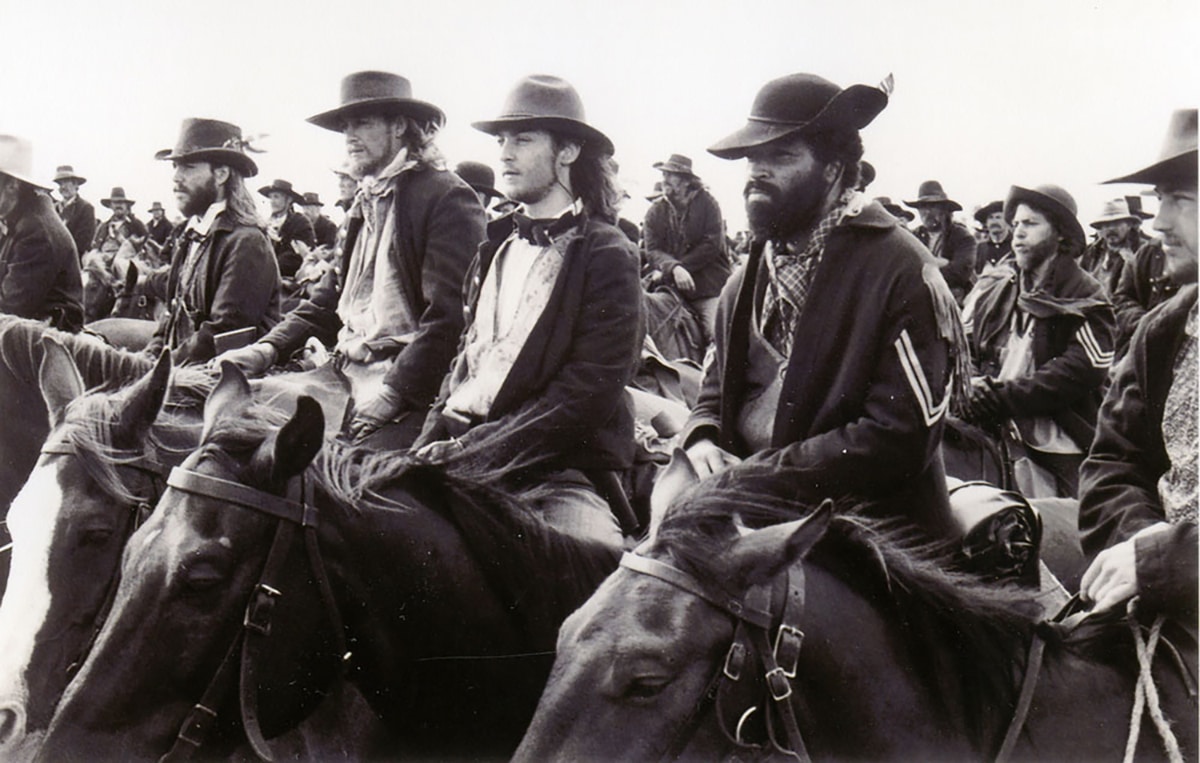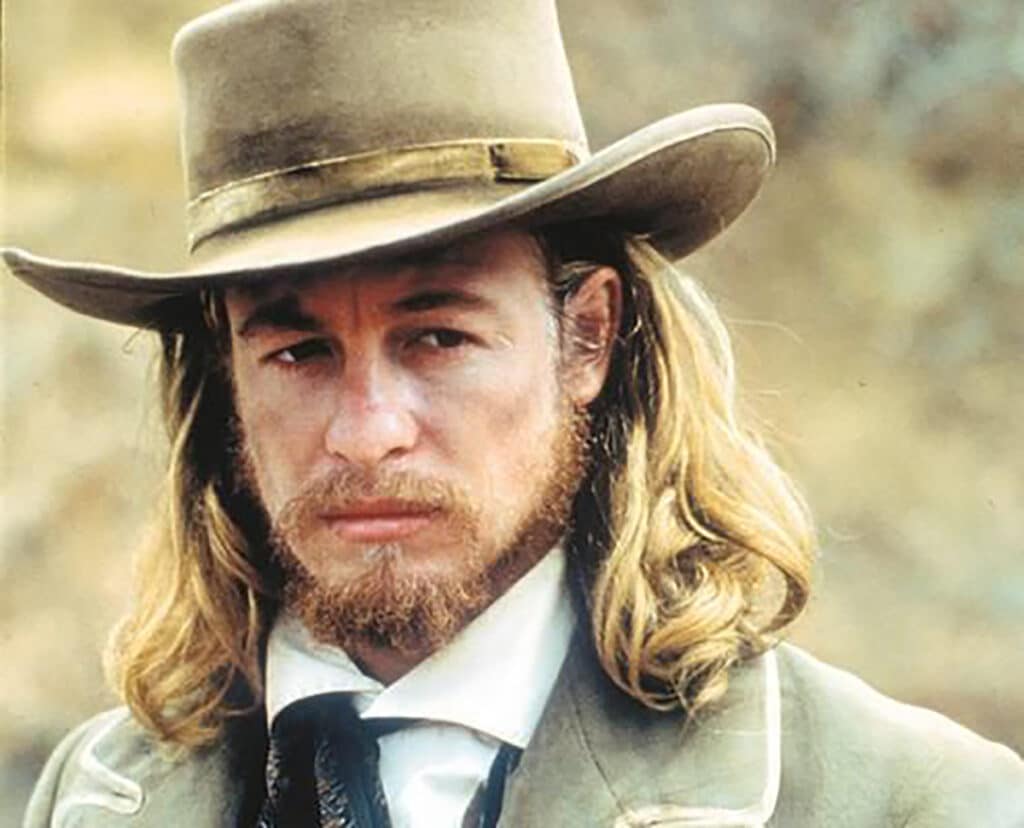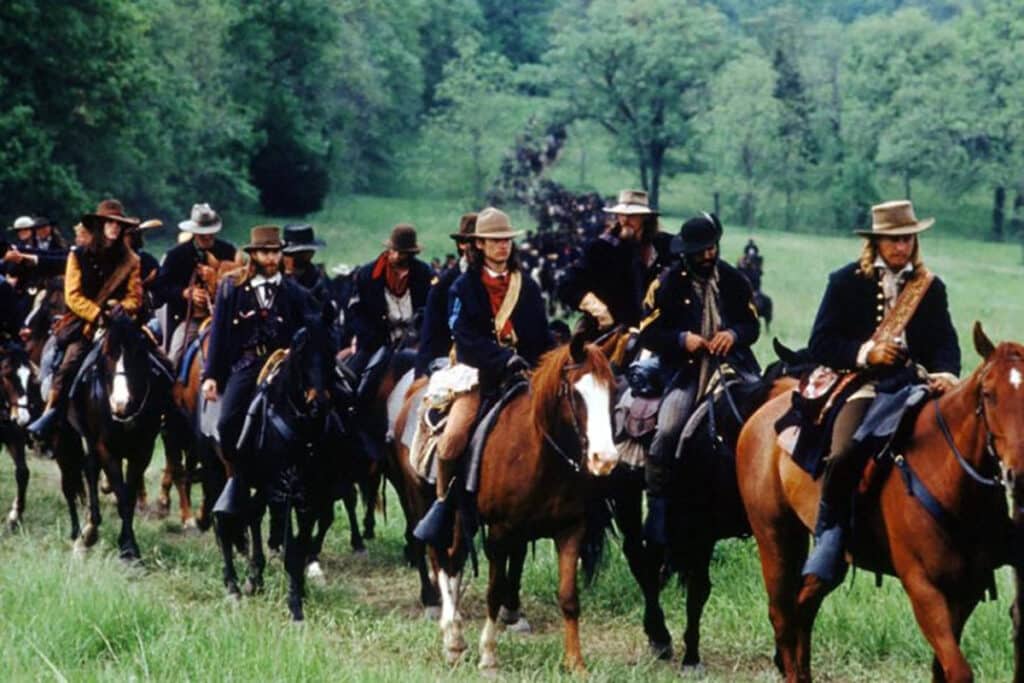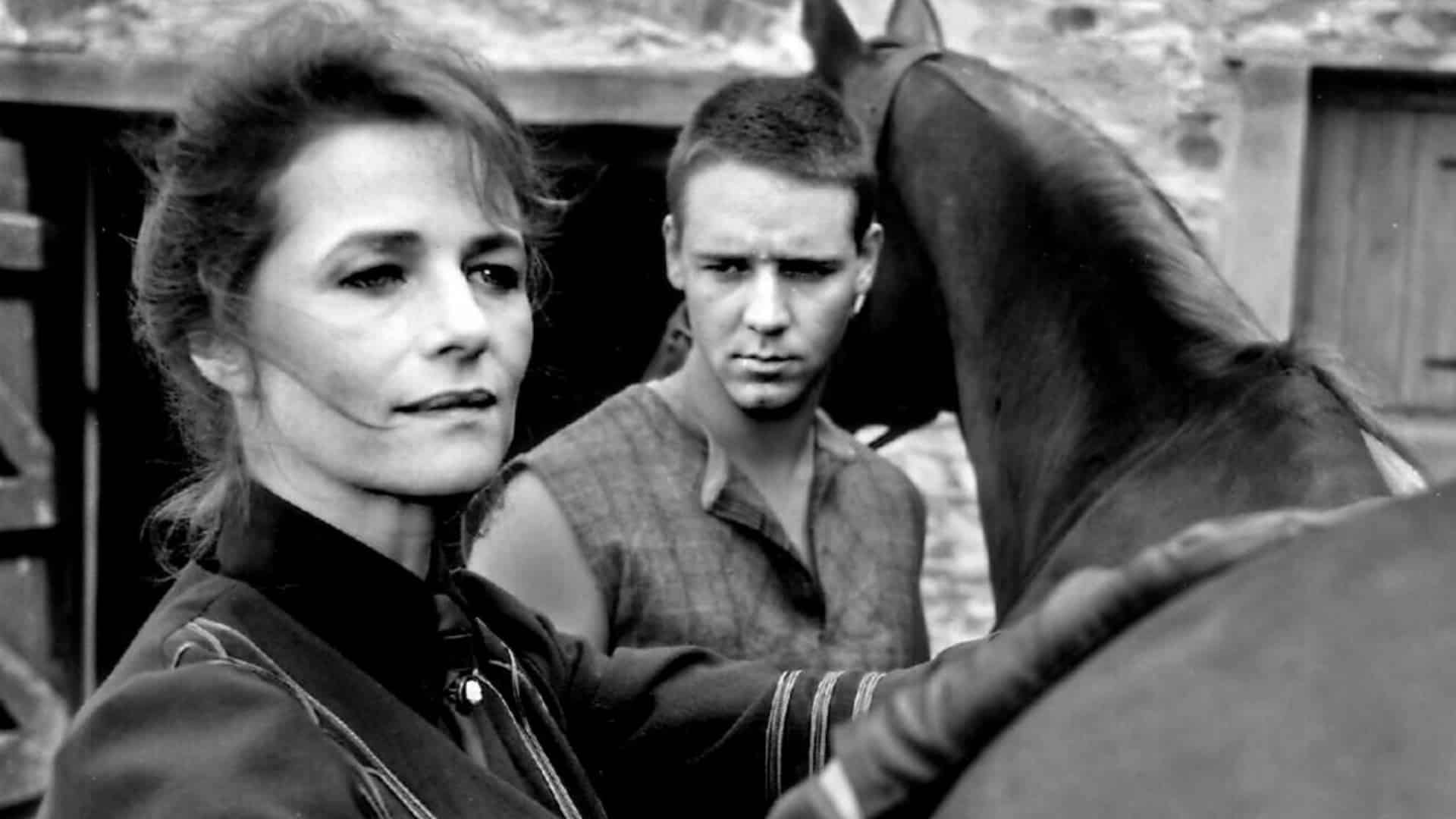Unless you count the excellent award-winning Brokeback Mountain, this lesser-heralded film Ride with the Devil is Ang Lee’s only western. Based on conflicting loyalties in the US Civil War, it also showcases how the role of “falling horses” have evolved in the history of Hollywood.
‘RIDE WITH THE DEVIL’ – 1999
Directed by Ang Lee starring Tobey Maquire, Skeet Ulrich and Jewel
Because both Leonardo Di Caprio and Matt Damon passed on the role, the lead in Ride with the Devil went to Tobey Maquire, 23 – before he was to become Spider-Man and Seabiscuit’s jockey.
Tobey plays teenager Jake Roedel who joins the Southern loyalist Bushwhackers after Union soldiers murder the father of his friend Jack Bull, played by Skeet Ulrich (real name Bryan Trout). Other players include Mark Ruffalo, Tom Wilkinson, Jeffrey Wright and Tasmanian Simon ‘The Mentalist’ Baker, as well as debuting the singer Jewel (Kilcher). While she was new to the movies, she was probably the most seasoned performer when it came to riding. She had grown up in poor circumstances in Alaska, travelled 15 miles to work on horseback and would take tourists out on trails. She later married a professional rodeo rider.

The film was a first on-screen appearance for singer Jewel Kilcher, second from left.

Tasmanian Simon ‘The Mentalist’ Baker.
Hendrickson’s chestnut quarter horse ‘Dollar’ was Ulrich’s mount which the following year was ridden by Matt Damon in All the Pretty Horses.
In most of Maguire’s scenes he rode ‘Blaze’, a baldy-faced chestnut. This Arabian/Quarter Horse had been a former falling horse with a long list of credits; difficult as a youngster he had mellowed into a good all-rounder. (See below about falling horses in the movies).
Hendrickson coached Maguire who did all his own riding. “He was an excellent student,” recalled the trainer, “and looked completely at home even at the gallop.”
“Blaze also had to
be a falling horse in
some battle scenes.”

Tobey Maquire as Jake Roedel (centre) riding ‘Blaze’, a baldy-faced chestnut Arabian/Quarter Horse.
‘Blaze’ also had to be a falling horse in some battle scenes; when the film wrapped, he was deservedly retired.
Another chestnut used in action sequences was ‘Paint That Ain’t’, owned by Hendrickson’s assistant wrangler, Mark Warrick, who these days works on Yellowstone.
Mounted Civil War re-enactors were hired – they often are in historical movies as they possess authentic knowledge and have period wardrobes for themselves and their horses. Two hundred of them worked on Ride with the Devil.
TRIVIA: “The film’s worth putting up with, to a point, because there’s such a dearth of adult westerns, and Ang Lee can mount a credible horseback action sequence. A couple of them, especially the invasion by mounted irregulars of Lawrence, Kansas, are breathtaking.” —David N. Meyer, The Brooklyn Rail

Head wrangler Rusty Hendrickson, who has worked on many other hit films.
FALLING HORSES IN MOVIES
Before the advent of trained falling horses, action film directors used cruel methods of bringing horses to the ground. The most popular, a device called a Running W, was used to trip horses as they ran, causing them to fall head over heels, resulting in serious injury and sometimes death.
In the 1940s the American Humane Association began putting pressure on film studios to stop this cruel practice. As a result, trained falling horses were used in some films. Because of the amount of training involved, these horses became prized for their skills. ‘Cocaine’, ‘Coco’, and ‘Tadpole’ were a few of the hardest working equine actors of the day, starring in films such as The Wonderful Country, Border River and The Wild Bunch. A talented modern-day falling horse is a chestnut gelding named ‘Wonderbread’, who appears in Django Unchained and True Grit (2010).

‘Ride with the Devil’ featured many horses.
TEACHING THE FALL
Do not try this at home! Trained falling horses are valuable, and for good reason: it takes a special animal to execute this behaviour.
“Think of a falling horse as an acrobat,” the writer Petrine Mitchum told Horse Illustrated in 2014. “They must be athletic, fearless and also have a very trusting nature. They have to not only be calm and strong but also willing to place total trust in their trainer.”
Petrine, who wrote Hollywood Hoofbeats: Trails Blazed Across the Silver Screen, went on to explain that before a horse is asked to fall, the ground is softened with a mixture of dirt, sand and sawdust. With the trainer on the ground the horse is taught to lie down from a halt. The animal’s left foreleg is tied up, and the trainer stands on the left side of the horse and gently pulls him off balance by pulling the right rein over the saddle. The trainer repeats the process daily until the horse learns the rein cue and no longer needs to have his leg tied. The trainer then teaches the horse to fall with a rider.
“The training is very specialised and not just anyone can do it,” Petrine says. “It requires extreme patience and confidence, and the ability to read the horse and know what it’s capable of, and when to push and when to back off. The trainer also must have impeccable timing and a certain fearlessness as well. To deliberately fall down with a 1,000-pound animal in a gallop is not for the faint of heart.” EQ
Ride with the Devil can be viewed on DVD and on various streaming services.
See more of Cocaine on YouTube in A Tribute to Hollywood’s Greatest Stunt Horse.
Next time in ‘Horses & Movies’, TV series Billy the Kid (2022-25) starring Tom Blyth and Australian Daniel Webber.






